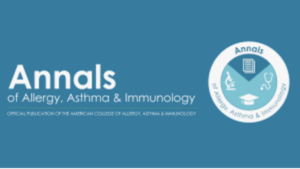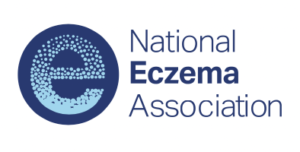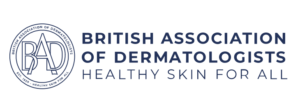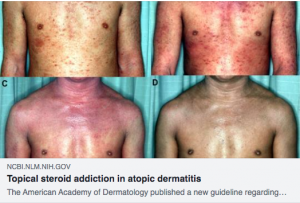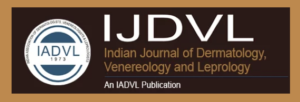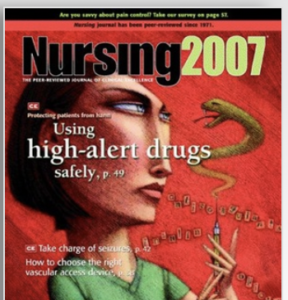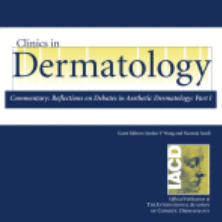Medical and Scientific Research
There are hundreds of studies and articles documenting Topical Steroid Addiction and Topical Steroid Withdrawal Syndrome. Below are a selection of some of the most salient articles that provide a good introduction to the scientific literature.
“Topical corticosteroid withdrawal syndrome: the patient community call for high-quality research, clear definitions and diagnostic criteria”
Laura Howells, Holly Broome, Alice Burleigh, Harriet Hammond, Farhan Ismail, Andrew Proctor, Amanda Roberts, Kim S. Thomas, Paul Leighton. British Journal of Dermatology, Volume 188, Issue 2, February 2023, Pages 288–289, DOI: 10.1093/bjd/ljac067
“Corticosteroid Exposure and Cumulative Effects in Patients with Eczema: Results from a Patient Survey”
Kelly Barta, Luz S. Fonacier, MD, Mary Hart, RRT, Peter Lio, MD, Kathryn Tullos, RN, Belinda Sheary, BMed, Tonya Winders, MBA. Annals of Allergy, Asthma and Immunology, September 2022. DOI:10.1016/j.anai.2022.09.031
“Topical Steroid Withdrawal Syndrome – Time to Bridge the Gap”
Cotter, et al. British Journal of Dermatology, July 14, 2022. DOI: 10.1111/bjd.21770
“What Every NP Should Know About TSW”
Kathryn Tullos, RN, NP Student Magazine, October, 2021
Press release: “Long-term continual use of topical steroids linked to skin withdrawal side effects”
From: Medicines and Healthcare products Regulatory Agency, published September 15, 2021
“TSW: What the Eczema Community Needs to Know Now”
National Eczema Association article, published March 2021
“A systematic review of topical corticosteroid withdrawal (“steroid addiction”) in patients with atopic dermatitis and other dermatoses”
The National Eczema Association Task Force: Tamar Hajar MD, Yael A. Leshem MD, Jon Hanifin MD, Susan T. Nedorost MD, Peter Lio MD, Amy S. Paller MD, Julie Block BA, Eric L. Simpson MD, Journal of the American Academy of Dermatology, 2015 March, 72(3), pp. 541-549.
View summary and key points
Abstract: http://www.ncbi.nlm.nih.gov/pubmed/25592622
When to consider TSWS rather than a typical “flare-up”: “Burning and stinging are the most frequently reported symptoms with erythema [redness] being the most common sign. Signs and symptoms occur days to weeks after topical corticosteroid (TCS) discontinuation. More data are needed regarding the frequency and duration of use that predisposes to this condition. Further, there are no data regarding the prevalence of this condition. It is also unclear whether children are actually less likely to develop this disorder or that cases of TCS withdrawal in the pediatric population are underreported…Extrapolating from our review, a clinician should favor TCS withdrawal over a flareup of the underlying atopic dermatitis if the following features are present: (1) burning is the prominent symptom, (2) confluent erythema occurs within days to weeks of TCS discontinuation, and (3) a history of frequent, prolonged TCS use on the face or genital region.”
Key points:
- Although many of the side effects of TCS are addressed in guidelines, TCS addiction is not.
- Burning and stinging were the most frequently reported symptoms with erythema [redness of the skin] being the most common sign.
- TCS withdrawal syndrome can be divided into papulopustular and erythematoedematous subtypes, with the latter presenting with more burning and edema.
- TCS withdrawal is likely a distinct clinical adverse effect of TCS. Patients and providers should be aware of its clinical presentation and risk factors.
“Topical Steroid Addiction in Atopic Dermatitis”
Mototsugu Fukaya MD, et al. Drug, Healthcare and Patient Safety, 2014;6: pp.131–138.
View summary and key points
Full text: http://www.ncbi.nlm.nih.gov/pmc/articles/PMC4207549/
Response to questions posed by the National Eczema Association (NEA): “Here, we describe the clinical features of topical steroid addiction or red burning skin syndrome, based on the treatment of many cases of the illness. Because there have been few articles in the medical literature regarding this illness, the description in this article will be of some benefit to better understand the illness and to spur discussion regarding topical steroid addiction or red burning skin syndrome.”
Key points:
“As the NEA expressed the end points of its research as some interrogative sentences on its website, the authors also will try to describe the illness by answering those questions.”
- How do you define steroid addiction?
- What are the clinical findings of steroid addiction?
- What do the skin lesions look like, and how are they different from eczema?
- Where on the body does it usually occur?
- What strength of steroid and usage pattern leads to steroid addiction?
- How is steroid addiction treated?
- How common is steroid addiction syndrome?
Other resources from Dr. Fukaya:
- “Improvement of Atopic Dermatitis After Discontinuation of Topical Corticosteroid Treatment.” Mototsugu Fukaya, MD. Archives of Dermatology. 2000;136(5):679-680. Abstract” http://archderm.jamanetwork.com/article.aspx?articleid=190182
Risk factors underestimated: “Topical corticosteroids are a useful form of treatment for atopic dermatitis. However, patients are likely to be addicted after long-term treatment. This paradoxical phenomenon has so far been underestimated, and improvement following the temporary rebound flare after discontinuation of corticosteroid therapy has been entirely ignored.”
- “Change of housing environment and withdrawal of corticosteroid as treatments of atopic dermatitis.” Mototsugu Fukaya, MD. Arerugi. 1999 May;48(5):520-5. Abstract: http://www.ncbi.nlm.nih.gov/pubmed/10390899
- English translation of Dr. Fukays’s online book – “Atopy Steroid Addiction in Japan.” Full Text: http://topicalsteroidaddiction.weebly.com

Image credit: Dermatology Times
“Topical corticosteroid addiction may be to blame when ‘rash’ defies treatment”
Paula Moyer, Dermatology Times, 1 October 2012.
View summary and key points
Full text: http://dermatologytimes.modernmedicine.com
TSWS is different from eczema: “When examining the patient, look at the erythematous lesions. They will have a different appearance from classic eczema. Atopic dermatitis typically has excoriated, lichenified lesions in the antecubital and popliteal areas. In contrast, patients with steroid-induced dermatitis have distant pruritic papules, nummular wet lesions and general skin vasodilation.”
Key points:
- Rather than an elusive allergen that defies treatment, the problem may be the treatment itself
- Pain medication, sleep aids, anti-anxiety medication and antihistamines can temporarily ameliorate the itch until the withdrawal reaction subsides
- Several months may pass before the flares subside
“Topical corticosteroid-induced rosacea-like dermatitis: a clinical study of 110 cases”
Sanjay K Rathi MD and Leishiwon Kumrah MD, Indian Journal of Dermatology, Venereology, and Leprology, 2011,Volume 77, Issue 1, pp 42-46.
View summary and key points
Full Text: http://www.ncbi.nlm.nih.gov/pubmed/21220878
Use of topical steroids can cause dermatitis with no previous underlying skin disease: “A total of 110 patients were enrolled for the study over a period of 2 years, excluding all those with the known disease entity in which topical steroids were commonly used. . .The duration of topical steroid use ranged from 4 months to 20 years. The most common clinical presentation was diffuse erythema (redness) of the face. Most of the patients had rebound phenomenon on discontinuation of the steroid.”
- Varied clinical presentations are seen with prolonged and continuous use of topical steroids.
- The most common topical steroid used was Betamethasone valerate, which could be due to its easy availability and low cost.
- The treatment of this dermatitis is difficult, requiring complete cessation of the offending steroid, usually done in a tapering fashion.
“Facing up to withdrawal from topical steroids”
Mary C. Smith, RN, MSN; Susan Nedorost, MD; and Brandie Tackett, MD, Nursing, September 2007, vol 37, issue 9, pp 60-61.
View summary and key points
Recognizing steroid addiction in patients and supporting patient needs following cessation of topical steroids: “MANY AMERICANS have chronic skin conditions such as seborrhea and eczema that affect the face. These conditions can cause erythema and pruritus and make the face look dry and scaly. Topical corticosteroids applied to the face to treat these symptoms can cause steroid rosacea and steroid addiction syndrome, resulting in new symptoms that perpetuate the topical steroid usage.”
- Topical corticosteroids used on the face for longer than two weeks can cause “severe burning and redness upon stopping the medication, which is called steroid addiction syndrome.”
- Temporary rebound flare may present upon stopping topical corticosteroids for topical steroid addicted patients.
- Symptoms of steroid addiction may include: “erythema, a burning sensation, papules and pustules.”
- Medical reconciliation is advised including reviewing possible sources of unlabeled steroids with patients.
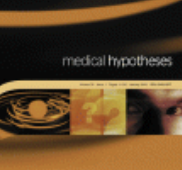
Image credit: Medical Hypotheses
“Prevalence of atopic diseases and the use of topical corticosteroids. Is there any connection?”
AN Pampura, MD, Medical Hypotheses, 2005;64(3):575-8.
View summary and key points
Abstract: http://www.ncbi.nlm.nih.gov/pubmed/15617870
Atopic diseases on the rise in developed countries: “The prevalence of atopic diseases (atopic dermatitis, bronchial asthma, allergic rhinitis) has considerably increased for the last 40 years. This tendency has coincided with the beginning of the epoch of the use of the topical corticosteroids, which have a potent immunomodulation action.”
Key points:
- Use of topical corticosteroids in children of early age contributes to the increase of prevalence of atopic diseases in developed countries.
- Lower prevalence of atopic diseases in rural areas and in children from families with the anthroposophic lifestyle.
- Increased level of atopic diseases among people with higher socioeconomic level and in children from 1 child families.
- Corticosteroid use in developing countries is limited due to economic reasons and active use of complementary medicine.
- If the proposed hypothesis is correct, a revision of the therapeutic approach is necessary concerning the attitude toward application of topical corticosteroids in children suffering from various forms of eczema.
“Corticosteroid Addiction and Withdrawal in the Atopic: The Red Burning Skin Syndrome”
Marvin J. Rapaport, MD and Mark Lebwohl, MD. Clinics in Dermatology. Volume 21, Issue 3, May–June 2003, pp. 201–214
View summary and key points
Abstract: http://www.sciencedirect.com/science/article/pii/S0738081X02003656
TSWS is caused by “corticosteroid addiction”: “This paper expands our previous observations to include patients with similar syndromes localized in other body areas.These conditions similarly resolved upon discontinuation of corticosteroids, suggesting that a significant proportion of these syndromes are attributable to chronic corticosteroid usage and “corticosteroid addiction.” The medical literature pertaining to these syndromes usually has implicated sun exposure, occult allergens, or psychosomatic reactions as the cause of ongoing skin eruptions. We consider “corticosteroid addiction” of the skin to be the pertinent etiologic factor in the majority of these patients.”
Key points:
- Typical presentation – “Withdrawal symptoms, manifested by angry erythema and burning, were long-lasting and severe.”
- Addiction patterns – “All of these patients had been treated with long-term topical corticosteroids, usually with escalating dosage and frequency of application. In the majority of patients, the initial symptom of pruritus commonly evolved into a characteristic, severe burning sensation. In many cases, systemic corticosteroids had also been administered to relieve the severe erythema and burning, but this only exacerbated the condition.”
- Withdrawal patterns – “The pattern of corticosteroid withdrawal was usually quite characteristic. Seven to 10 days after corticosteroids were stopped, an initial flare of erythema occurred at the site of the original dermatitis, accompanied by local spread and marked burning. This flare lasted anywhere from 7 to 14 days and culminated with exfoliation.”
- Time frames for recovery – “This pattern of flare and quiescence repeated itself but each time with flares of shorter duration and more prolonged quiescent periods. Edema, burning, and erythema decreased with each episode of flare.” “The time required for corticosteroid withdrawal mirrored the time over which they had originally been applied, and was often protracted.”
- Mechanism for how steroid addiction occurs is not understood – “Possible mechanisms might involve an effect on the “skin immune system,” a direct effect on blood vessels in the skin or effects on the pituitary-adrenal axis.”
Other resources from Dr. Rapaport:
- “The red skin syndromes: corticosteroid addiction and withdrawal.”
Marvin J Rapaport, MD and Vicki Rapaport, MD. Expert Review of Dermatology. August 2006, Vol. 1, No. 4, pp. 547-561.
Abstract: http://informahealthcare.com/doi/abs/10.1586/17469872.1.4.547
Full text: http://www.rapdermbh.com/PDFs/red-skin.pdf
- “Eyelid dermatitis to red face syndrome to cure: clinical experience in 100 cases.”
Marvin J. Rapaport MD, Vicki H. Rapaport MD. J Am Acad Dermatol. 1999 Sep;41(3 Pt 1):435-42.
Abstract: http://www.ncbi.nlm.nih.gov/pubmed/10459119
Full Text: http://www.rapdermbh.com/clinic/press/eyelid-dermatitis/
- “Serum Nitric Oxide Levels in “Red” Patients: Separating Corticosteroid-Addicted Patients From Those With Chronic Eczema”
Marvin J. Rapaport, MD; Vicki H. Rapaport, MD. Archives of Dermatology. 2004;140(8):1013-1014.
Full text: http://archderm.jamanetwork.com/article.aspx?articleid=480695
- FOX 11 News Feature Story: Dr. Rapaport on Red Skin Syndrome
Additional articles
View More
- “Topical corticosteroid abuse on the face: a prospective, multicenter study of dermatology outpatients.” Saraswat A, Lahiri K, Chatterjee M, Barua S, Coondoo A, Mittal A, Panda S, Rajagopalan M, Sharma R, Abraham A, Verma SB, Srinivas CR. Indian Journal of Dermatology, Venereology, and Leprology. 2011 Mar-Apr;77(2):160-6.
- “Steroid-induced rosacea-like dermatitis: case report and review of the literature.” Chen AY, Zirwas MJ. Cutis. 2009 Apr;83(4):198-204.
- “Steroid dermatitis resembling rosacea: aetiopathogenesis and treatment.” Ljubojeviae S1, Basta-Juzbasiae A, Lipozenèiae J. Journal of the European Academy of Dermatology and Venereology. 2002 Mar;16(2):121-6.
- “Topical Corticosteroid Addiction and Phobia.” Aparajita Ghosh, Sujata Sengupta, Arijit Coondoo, and Amlan Kusum Jana. Indian Journal of Dermatology. 2014 Sep-Oct; 59(5): 465–468.
- “Side-effects of topical steroids: A long overdue revisit” Arijit Coondoo, Meghana Phiske, Shyam Verma, and Koushik Lahiri. Indian Dermatology Online Journal. 2014 Oct-Dec; 5(4): 416–425. (this has a long section about rebound phenomenon and steroid addiction)


